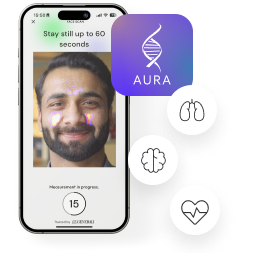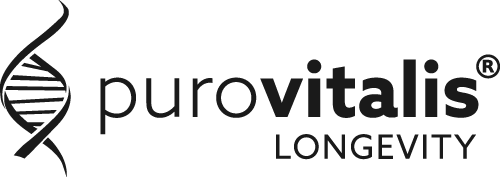
table of contents
Reproductive aging is a natural biological process that unfolds gradually, marked by a steady decline in the efficiency of the reproductive system. For women, this means more than a reduced ability to conceive—it also has important implications for longevity and long-term health. The ovaries, which age faster than most other organs, play a central role not only in fertility but also in hormonal regulation that affects bone strength, cardiovascular health, metabolism, and brain function [1,2].
This blog will explore the science behind reproductive aging, from the biological changes in the ovaries to the molecular mechanisms that influence egg quality. We will also look at emerging strategies aimed at preserving fertility and supporting healthy longevity. Understanding these changes is essential for women to make informed decisions about family planning, preventive care, and health maintenance across the lifespan.
The natural age-related decline of fertility
The clearest sign of reproductive aging is the gradual drop in female fertility. While fertility is generally stable through the twenties and early thirties, it begins to decline more noticeably after age 35–37. By 45, natural conception is uncommon, and menopause—typically around age 50—marks the end of the reproductive years[3,4].
Men’s fertility declines more slowly, without the sharp cut-off seen in women. For couples, knowing these differences is important when planning for children.
Menopause brings more than the end of fertility. Falling estrogen and progesterone levels affect bone, heart, and brain health, as well as mood and energy. Because the ovaries age faster than most other organs, these changes can raise health risks during and after menopause, linking reproductive aging closely to women’s long-term health and longevity [1,5].
The biology of ovaries and ovarian aging
The ovaries are central to a woman’s reproductive health, controlling the menstrual cycle and releasing hormones essential for fertility. With age, the number of ovarian follicles—the tiny sacs that hold developing eggs—declines. This loss affects both egg quantity and quality, making conception harder and increasing the risk of complications in later pregnancies [2,4].
The impacts of ovarian aging
Ovarian aging affects far more than fertility—it influences multiple areas of a woman’s health through changes in hormone production.
Perimenopausal symptoms
As estrogen and progesterone levels fluctuate, many women experience hot flashes, night sweats, irregular cycles, and mood swings. These symptoms can disrupt sleep, lower energy, and impact daily well-being. For some, the emotional effects, such as irritability or anxiety, can be as challenging as the physical discomfort.
Bone density loss
Estrogen plays a key role in maintaining strong bones. When levels drop during and after menopause, bone breakdown accelerates, increasing the risk of osteoporosis and fractures. Without preventive action, these changes can significantly affect mobility and independence later in life.
Risk of cardiovascular and metabolic diseases
Lower estrogen after menopause can lead to changes in cholesterol, blood vessel health, and insulin sensitivity. This raises the risk of heart disease, high blood pressure, and type 2 diabetes, making cardiovascular monitoring especially important in postmenopausal years.
Risks of cognitive decline
Hormonal shifts may also influence brain health. Postmenopausal women face a higher risk of memory problems, reduced mental sharpness, and neurodegenerative conditions such as dementia. Proactive lifestyle and health strategies—like regular exercise, balanced nutrition, and mental stimulation—can help protect cognitive function[5].
The mechanisms influencing egg cell deterioration
Oocytes, commonly referred to as egg cells, are the female reproductive cells. They are the cells responsible for passing on genetic information and traits to the next generation when they combine with the male sperm cell during fertilization. Oocytes are produced in the ovaries and are a crucial part of the reproductive process.
The main molecular mechanisms contributing to the deterioration of the eggs cells quality include:
Chromosomal separation
As women get older, the structure inside their eggs that holds chromosomes together starts to get weaker. This can lead to the formation of eggs that aren’t normal, a condition known as “egg aneuploidy.” This issue is a common reason for difficulties in getting pregnant, miscarriages, and birth defects. The likelihood of producing such abnormal eggs is higher in women who are under 20 or over 35 years old.
Telomere shortening
Telomeres protect the ends of chromosomes and their shortening is a natural part of aging in cells, including oocytes. Shorter telomeres in oocytes are linked to decreased fertility and earlier onset of menopause. As ovarian aging progresses, the shortening of telomeres in egg cells contributes to a decline in reproductive capacity[3].
Read more about the influence of telomere shortening as we age here.
DNA damage response and genetic mutations
With age, the effectiveness of DNA repair mechanisms in oocytes decreases. This leads to an accumulation of genetic mutations and a higher risk of reproductive issues like Premature Ovarian Insufficiency (POI). These genetic factors are key indicators of ovarian aging.
DNA damage also influences our overall aging process. Discover all the hallmarks of aging here.
Reactive oxygen species (ROS) and oxidative stress
Oxidative stress increases in oocytes as women age. This stress can damage the DNA and other cellular structures within the egg cells, contributing to a decline in their quality and number.
Mitochondrial dysfunction
Mitochondria are crucial for energy production in cells. In oocytes, mitochondrial dysfunction is linked to aging. As women get older, changes in mitochondrial function in their egg cells can lead to decreased fertility and are indicative of ovarian aging.
Epigenetic influences
As women get older, the way genes work in their oocytes changes. This happens because of alterations in DNA methylation (a process that turns genes on or off) and changes in histone modifications (which affect how tightly DNA is packed). These changes can lead to decreased fertility and are signs that the ovaries are getting older.
Ovarian microenvironment
The environment surrounding the eggs in the ovaries influences oocyte quality. changes with age. Alterations in this environment can accelerate oocyte aging and lead to infertility[2,4].
Extending fertility and health for women
As life expectancy rises, closing the gap between lifespan and healthspan is increasingly important. In reproductive health, this means not only extending fertility where possible but also supporting women’s well-being after the reproductive years.
Current research is exploring:
Nutritional and supplemental strategies (e.g., NMN, spermidine) to support mitochondrial health and egg quality [1,3]
Antioxidants to reduce oxidative stress in ovarian tissue
Hormonal and non-hormonal therapies to manage menopausal symptoms and protect long-term health
Lifestyle factors remain critical: a balanced diet, regular physical activity, not smoking, managing chronic conditions early, and having regular health check-ups all help maintain reproductive and overall health.
Related: Research shows Spermidine may booster fertility
Conclusion and future perspectives
Reproductive longevity research is a growing field, aiming to extend the years in which women can conceive while safeguarding long-term health. This involves understanding the biological drivers of ovarian aging and developing interventions that address both fertility and the health risks associated with menopause.
With continued research, increased public awareness, and evidence-based strategies, women will have more tools to make informed decisions about family planning, preventive health, and longevity. Approaching reproductive aging with knowledge and preparation can help ensure better health outcomes throughout life.
Related: Does NMN increase fertility in woman?
References
- Dong L, Teh DBL, Kennedy BK, Huang Z. Unraveling female reproductive senescence to enhance healthy longevity. Cell Res. 2023;33:11-29. doi:10.1038/s41422-022-00791-0.
- Duncan FE, Confino R, Pavone ME. Female reproductive aging: From consequences to mechanisms, markers, and treatments. In: Conn PM, editor. Conn’s Handbook of Models for Human Aging. 2nd ed. Cambridge (MA): Academic Press; 2018. p. 109-30. doi:10.1016/B978-0-12-811353-0.00009-9.
- Yureneva S, Averkova V, Silachev D, Donnikov A, Gavisova A, Serov V, et al. Searching for female reproductive aging and longevity biomarkers. Aging (Albany NY). 2021;13(12):16873-94. doi:10.18632/aging.203206.
- Shirasuna K, Iwata H. Effect of aging on the female reproductive function. Contracept Reprod Med. 2017;2:23. doi:10.1186/s40834-017-0050-9.
- Bhasin S, Kerr C, Oktay K, Racowsky C. The implications of reproductive aging for the health, vitality, and economic welfare of human societies. J Clin Endocrinol Metab. 2019;104(9):3821-5. doi:10.1210/jc.2019-00315.

Track 20+ health metrics with AI-powered accuracy. Start your free trial today and take control of your wellness journey!

longevity tips best exercises nutrition diets healthy lifestyle
The art of living well a life that’s not measured by years alone, but by experiences, health, and joy!









